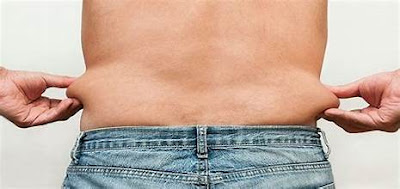How to Lose Weight Fast: A Comprehensive Guide
Losing weight can be a challenging journey, especially if you're aiming to do it quickly. Whether it’s for a special occasion, health reasons, or simply to feel better in your own skin, understanding how to lose weight effectively is crucial. This article will explore various methods, tips, and strategies that can help you shed those extra pounds in a safe and sustainable way.
Understanding Weight Loss
Before diving into strategies for rapid weight loss, it’s important to understand what weight loss actually involves. Weight loss occurs when you burn more calories than you consume. This can be achieved through a combination of dietary changes, increased physical activity, and lifestyle adjustments.
Setting Realistic Goals
While it may be tempting to aim for a dramatic weight loss figure, setting realistic and achievable goals is key. A safe and sustainable rate of weight loss is typically 1-2 pounds per week. Rapid weight loss can sometimes lead to muscle loss, nutritional deficiencies, and other health issues. Instead, aim for a moderate approach that includes a combination of dietary changes and exercise.
Dietary Changes for Fast Weight Loss
Reduce Caloric Intake: Start by calculating your Total Daily Energy Expenditure (TDEE). This is the number of calories you burn daily, including your basal metabolic rate (BMR) and physical activity. Aim to create a calorie deficit by consuming fewer calories than your TDEE.
Opt for Nutrient-Dense Foods: Focus on whole foods such as fruits, vegetables, lean proteins, whole grains, and healthy fats. These foods are not only lower in calories but also provide essential nutrients that your body needs.
Cut Back on Sugars and Refined Carbs: High-sugar foods and refined carbohydrates can spike insulin levels and lead to increased hunger. Reduce your intake of sugary drinks, candies, pastries, and white bread.
Increase Protein Intake: Protein can help reduce appetite and increase feelings of fullness. Incorporate lean proteins like chicken, turkey, fish, beans, and legumes into your meals.
Stay Hydrated: Drinking water can aid in weight loss. Sometimes, our bodies confuse thirst with hunger. Aim to drink at least 8-10 glasses of water daily. Drinking water before meals can also help reduce calorie intake.
Try Intermittent Fasting: This eating pattern involves alternating periods of eating and fasting. It can help reduce calorie intake and improve metabolic health. Popular methods include the 16/8 method (16 hours of fasting and an 8-hour eating window) or the 5:2 method (eating normally for five days and restricting calories on two non-consecutive days).
Exercise for Weight Loss
Incorporate Cardiovascular Exercise: Cardiovascular activities, such as running, cycling, swimming, or brisk walking, can burn significant calories. Aim for at least 150 minutes of moderate aerobic activity or 75 minutes of vigorous activity each week.
Strength Training: Building muscle increases your resting metabolic rate, meaning you burn more calories even at rest. Incorporate strength training exercises at least two days a week, focusing on all major muscle groups.
High-Intensity Interval Training (HIIT): HIIT involves short bursts of intense exercise followed by rest periods. This method can be highly effective for burning calories and improving fitness in a shorter time frame.
Stay Active Throughout the Day: Look for opportunities to increase your daily activity. Take the stairs instead of the elevator, walk during breaks, or stand while working. Every little bit adds up!
Lifestyle Changes to Support Weight Loss
Get Enough Sleep: Lack of sleep can disrupt hormones that regulate appetite, leading to increased hunger and cravings. Aim for 7-9 hours of quality sleep each night.
Manage Stress: Chronic stress can lead to emotional eating and weight gain. Incorporate stress-reducing activities into your routine, such as meditation, yoga, or deep breathing exercises.
Keep a Food Diary: Tracking what you eat can increase awareness of your dietary habits and help identify areas for improvement. Apps like MyFitnessPal or even a simple notebook can be useful.
Find Support: Whether it’s friends, family, or a weight loss group, having a support system can motivate you and keep you accountable.
Stay Consistent: Rapid weight loss is possible, but it requires commitment. Stick to your plan and be patient. Remember, weight loss is a journey, not a sprint.
Common Myths About Rapid Weight Loss
You Have to Starve Yourself: While calorie reduction is necessary for weight loss, starving yourself can lead to nutrient deficiencies and rebound weight gain. Focus on balanced meals.
All Weight Loss Methods Are Safe: Not all weight loss methods are safe or effective. Avoid fad diets, weight loss pills, and extreme calorie restrictions. Always consult a healthcare professional before making significant changes.
Quick Fixes Work: Many quick-fix solutions offer temporary results. Sustainable weight loss involves lifestyle changes that you can maintain long-term.
Monitoring Your Progress
Regularly monitoring your weight loss progress can help you stay motivated. Use a scale, take measurements, or assess how your clothes fit. Keep in mind that weight can fluctuate due to various factors, including water retention, muscle gain, and hormonal changes. Focus on long-term trends rather than day-to-day changes.
Conclusion
Losing weight fast is possible, but it requires a well-rounded approach that includes dietary changes, exercise, and lifestyle modifications. Focus on creating a calorie deficit, choosing nutrient-dense foods, and staying active. Remember to set realistic goals and be patient with yourself. With dedication and the right strategies, you can achieve your weight loss goals in a safe and sustainable manner.



0 Comments
If you have any doubt or problem.please let me know